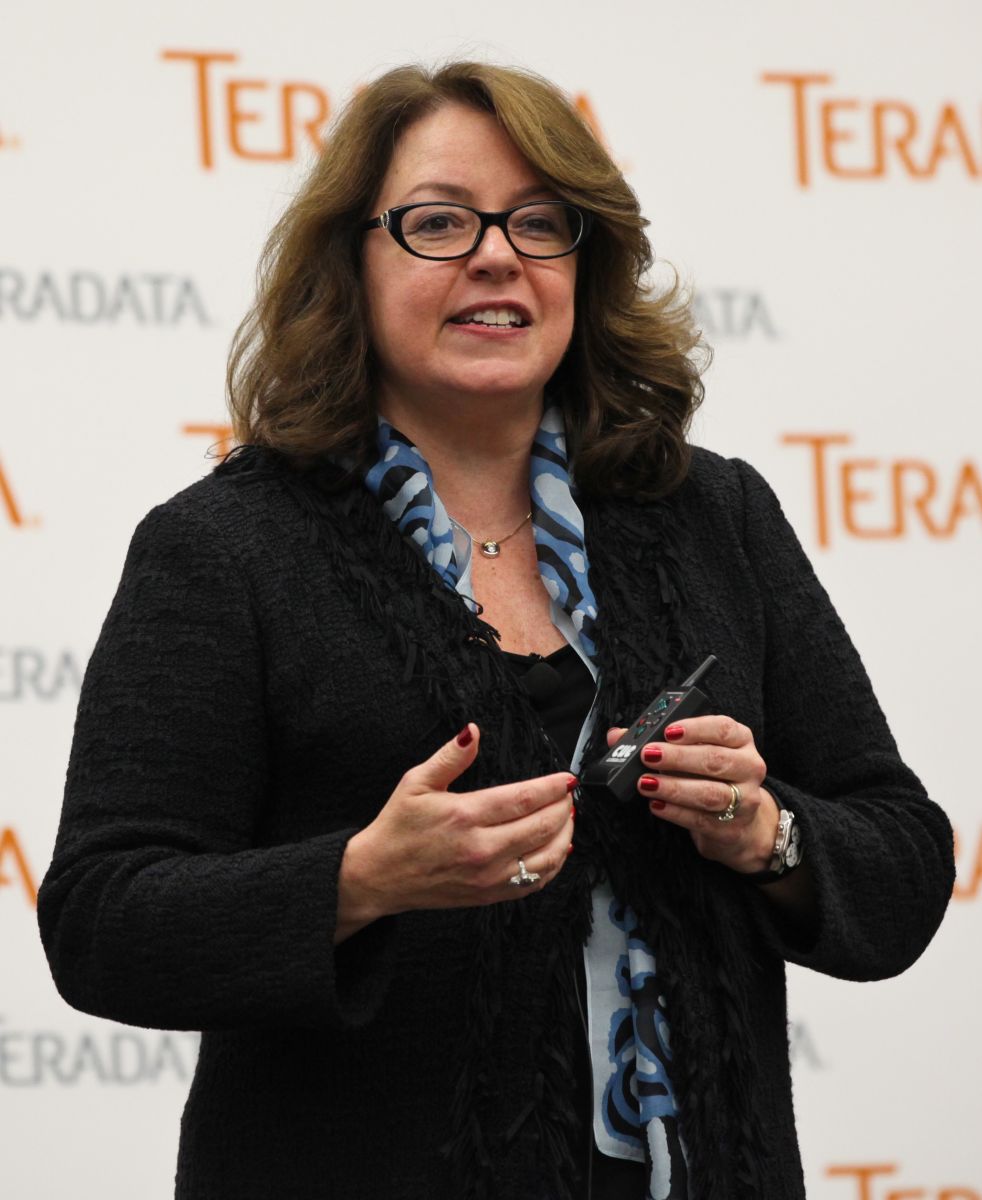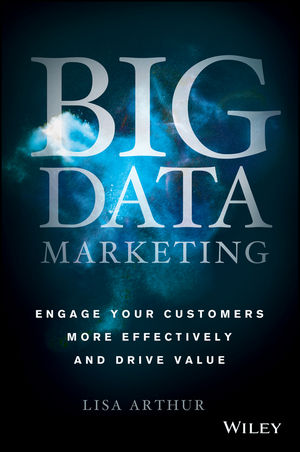Better together: Bridging the CMO-CIO divide
By Gabey Goh November 21, 2013
- Teradata Applications CMO advocates education to better enable CMOs and CIOs to work together
- Breaking down silos, mapping wider strategy and untangling the ‘data hairball’ the first steps forward
 A MARKETING Survey conducted by Teradata in May of this year found that 78% of marketers are feeling the pressure to be data-driven in their approach and strategies.
A MARKETING Survey conducted by Teradata in May of this year found that 78% of marketers are feeling the pressure to be data-driven in their approach and strategies.
In addition, 45% believe that data is the most under-utilised asset in the marketing organisation.
Lisa Arthur (pic), chief marketing officer (CMO) of Teradata Applications, a division of Teradata, noted that this pressure on marketers stems from the broader organisation and external customers who are demanding better experiences in their desire to engage with the brand.
This heightening of marketing’s internal accountability, to show return on investment, has seen more CMOs turn to digital solutions as a means to garner insights and new tools to achieve business objectives.
However doing so requires an increased level of cooperation between marketing and IT, two departments that until recently had never needed to work together this closely.
Frustrations with processes slowing down internal IT deployments have pushed more than one CMO toward finding solutions on their own, often without realising its impact on the company’s other IT assets.
And, frustrations with marketing’s impatience for new tools and ad hoc purchases made using marketing budgets have made IT departments dig their heels in deeper while they grapple with the increased need to frame their own proposals within the wider framework of business goals to justify costs.
Research firm Gartner already predicted last year that by 2017, CMOs will be spending more on technology than their CIOs (chief information officers).
In an interview with Digital News Asia (DNA), on the sidelines of the Teradata Partners Conference that took place in Dallas, Texas in October, Arthur said that while the appetite to embrace a data-driven approach was certainly there, many issues must first be overcome.
The first is tearing down organisational silos to better enable cross-departmental cooperation.
“There are tremendous silos between marketing and IT that must first be addressed. Our research showed that 45% of CIOs believe that marketing just does its own thing while 50% of marketers want to do it themselves because they don’t work well with IT,” she said.
Once the pathways to better collaborations have been established, Arthur said that the next hurdle is untangling the “data hairball."
The survey revealed that less than 10% of marketers use data in a programmatic way and only 32% own or control most customer data, with the rest relying on accessing data from IT or external vendors
“One of the biggest obstacles is access to customer data. We found that only 18% of marketers have a holistic view of their customer. Because that information is tangled in what I call the data hairball, a mess is only going to become more convoluted and snarled as big data grows,” she added.
Arthur said that to fix this this fragmented customer view, the onus is on marketing to work across the business and work with IT to pilot big data projects that will uncover new ways data can add value.
She admitted that despite the promise of transparency and measurable results, which can be gained from digital marketing channels and tools, marketers are still struggling to prove big data's value to an organisation.
“I believe it’s a cultural issue. We do tend to get attracted to pretty, shiny things and are fairly ad hoc in the way we managed marketing for the longest time. But many multinational corporations have already adopted a process-driven culture and marketers have to transition to a culture of metrics,” she said.
Arthur said that the first step is defining what terms such as ROI (return on investment) mean to the organisation in view of wider business objectives, before determining the metrics that will demonstrate and communicate how marketing’s results are contributing to the business.
“Marketers need to work in counsel with others, including the CIO, to estimate how you want to calculate values and scorecards for progress. Then you can use the software to automate the process and feed insights back into the decision-making process,” she added.
The Teradata survey also showed that 65% of marketers report misalignment within their own departments, and even more (75%) cite a rift with IT.
In another interview with DNA, Teradata chief technology officer Stephen Brobst pointed out that marketing wants big data but there’s still an unwillingness to increase the budgets of the CIO.
“The complaint from them to IT is that they don’t move fast enough and it's also way too expensive. Marketing is taking more control over budgets and making internal IT compete with external vendors,” he said.
Brobst said that in many cases, it’s unfair to say that internal IT “wasn’t fast or cheap enough” because only the cost of software licences and hardware is looked at, and not other factors such as the cost of talent to manage solutions, as well as the cost of data centres and floor space, among others.
“So there needs to be education on both sides, because it’s not just about the speed but also about the cost,” he said.
When asked about her thoughts on what her Teradata colleague said, Arthur agreed that education was needed for both sides of the divide.
She shared that she had heard anecdotes about marketers moving ahead with a new solution despite red flags thrown by the IT department, only for the initiative to fail due to isses such as the tool being unable to integrate with existing data sets.
“When it comes to budgets, I think it’s less about reluctance and more about getting the right education on what is internally possible. Sometimes marketers will go right for the tech solution thinking it’s going to help, and did not take the time to build not just the business case but also take in the impact of this new tech on the broader landscape of the organisation’s existing IT assets,” she said.
Arthur said that the push for IT to work better with marketers shouldn’t be centred on issues such as slowing down timelines or doing it cheap, but about addressing business challenges.
“It’s about aligning with what is the broader strategy. What is your customer experience strategy? What is the analytics strategy? Data strategy? You need to know if you have the talent and skills to execute these things.
 “It’s not just one thing, it’s five things that need to be aligned between the CIO and CMO. Once you have that, then speed can happen because there’s clarity and value in doing so. You can communicate to the CEO and CFO (chief executive and financial officer) why you want to make an investment and how it’s going to improve customer engagement and revenue,” she said.
“It’s not just one thing, it’s five things that need to be aligned between the CIO and CMO. Once you have that, then speed can happen because there’s clarity and value in doing so. You can communicate to the CEO and CFO (chief executive and financial officer) why you want to make an investment and how it’s going to improve customer engagement and revenue,” she said.
To help spread the benefits of embracing a data-driven marketing strategy, Arthur recently wrote a book called Big Data Marketing: Engage Your Customers More Effectively and Drive Value, published by Wiley in October.
The book outlines a practical roadmap for executives, marketers and others who want to tackle big data and use it to improve customer experiences, show revenue impact and demonstrate the value of their own roles. All profits from the book’s sales will be donated to the American Red Cross.
Arthur shared that it took just over a year to put the book together, drawing on experiences from over 30 years in technology marketing roles and her current role with Teradata Applications.
“It’s kind of exciting and I love to look at what people are saying to me because I am our target market too.
“Too many vendors are still talking about technology and not about the business value it bring to the table. We’re focused on an educational approach, taking the hype out of what data-driven marketing is and talking about how we can help drive that value,” she added.
Related Stories:
Teradata targets unified data, better analytics and marketers
In 3yrs, the term ‘big data’ will disappear: Teradata CTO
For more technology news and the latest updates, follow @dnewsasia on Twitter or Like us on Facebook.


